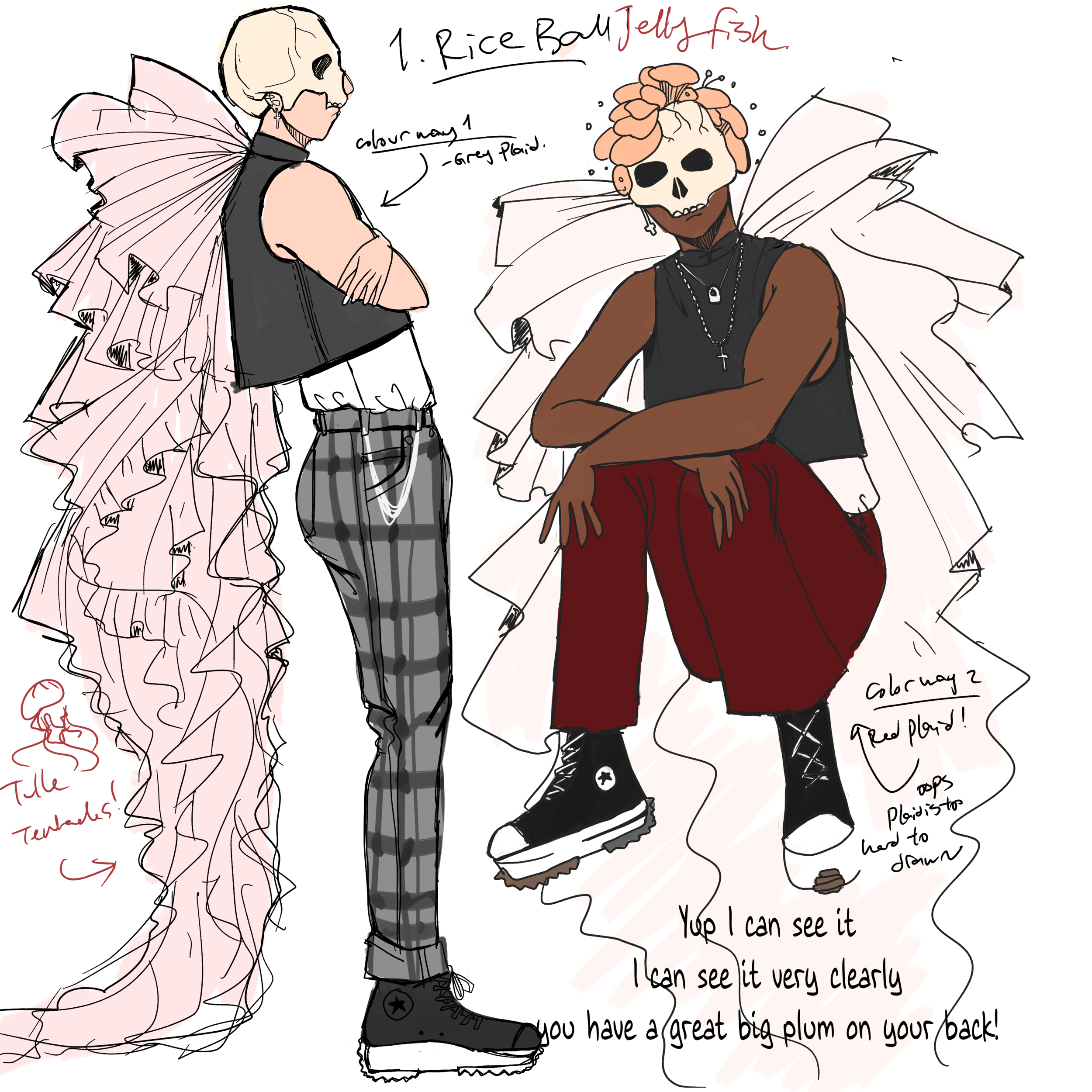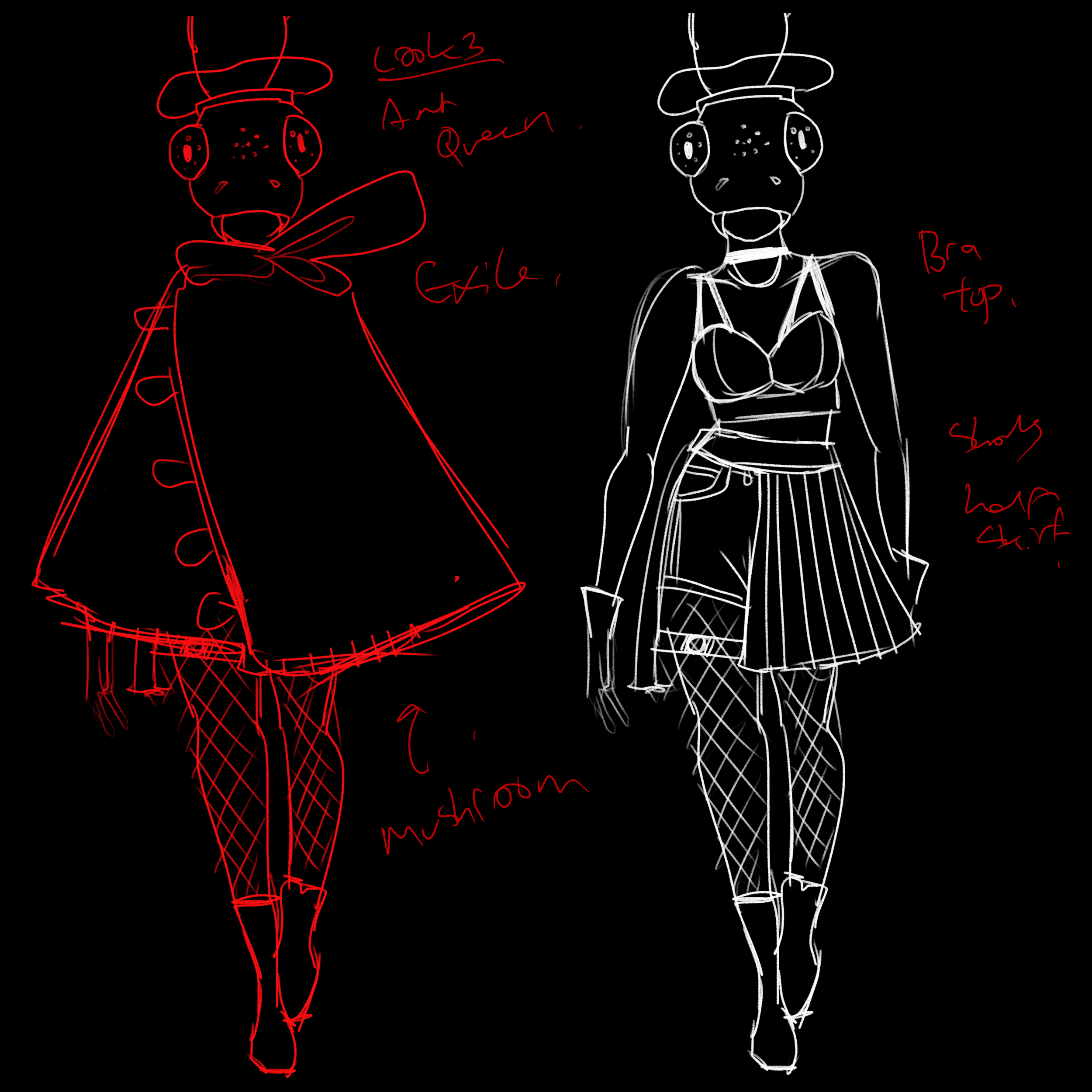MODA Designer Profile: Andrew Chang
This year, I have the chance to experience my first ever MODA show—although under new, constantly changing circumstances. In this entry, you will read fourth-year MODA designer Andrew Chang’s interview about his last collection in the MODA. When I was a new member of the MODA community, not knowing what to do or how to reflect my own voice in a blog, my editor Andy was always there with his supporting and caring messages. So it was so special for me to hear his story and his ideas on creation and design. I hope you will also enjoy reading our quick conversation about Andy’s collection, designs, inspirations, and more.
Andrew’s Moodboard
I know that you have done fashion design before. And I stalked you a little bit looking at your designer profiles. I see that your previous collections were a combination of abstract ideas that occupy your mind and pinpoints of your life, such as people and readings. What are some sources of inspiration for your collection this year? And how do they differ from your previous projects?
All of my collections have always been a kind of collage of the things around me. People, music, literature… so you are absolutely right in that sense. I think I stuck to the same storyline for a lot of my collections: the idea of moving from one stage of my life to another, and this year it’s kind of the same idea.
I believe this year’s collection is the most personal one that I’ve ever done; it loosely explores the theme of isolation, and a big inspiration was Kafka’s “The Metamorphosis”—the story about the guy who turns into a bug - mixed in with a little bit of The Last of Us, this video game about killer mushrooms (laughs).
Before the pandemic, I think I had a lot of doubt in myself. I thought maybe I was a little bit too much for the people around me. I think when I started to value my individuality--what I am interested in, what I wanted to d, I got worried that the more I leaned into what I loved, the more I would be isolated from the people around me, in fear that I was just kind of different.
This collection explores this idea but told through the lens of a different story: the story of a colony of ants that gets infected by the spores of a killer mushroom.
These killer mushroom spores infect the queen of this colony and despite her contributions to the colony, all the other ants decide to exile her. As she leaves her former colony, the spores begin to sprout these mushrooms, and rather than killing her—which is what she thinks what will happen—they don’t kill her, they just unlock a part of her mind that allows her to think or see the world differently. She begins to value creativity, individuality, authenticity… She also lets go of what she valued before and her old colony—the productivity that I think we know from ants. She decides that with this new found knowledge, she is going to found a new colony that built on these values.
So, that's the story. All the looks track a different stage in this queen’s life. And, each look somewhat represents four stages of isolation: exile, solitude, individuality, and independence.
How did your current collection shape the way you look at your inspirations, plans, people in the process, or anything you would like to mention?
I actually started designing this collection before the show last year. I started designing really, really early. I just wanted to get my thoughts onto a piece of paper. The collection looked so much different then, because I always turn to creating to cope with some things I was going through: this collection really honestly deals with my fears of loneliness. I think I knew what the collection was about, and I think my close friends knew what it was about. But the way I designed it is in a way that only I have to know what it is about, and what anybody else sees will be the ants and the mushrooms.
I’m hoping people will be able to look at this collection and say “I relate to the feelings of this queen.” even if their experience with isolation was completely different from what I was going through. I find that to be the fun part of designing. You can take something so personal to you, you can abstract it through this collage of ideas, and through abstracting it, more people can resonate with it.
Working on this collection was kind of how I reframed my fears of isolation. It's kind of a metaphor for me, about what loneliness is. You realize that it is not going to be one thing or the other. Isolation can be such a cage sometime, but at the same time, it can be key to that cage. It can be something so isolating, but it can be so liberating at the same time. And I think putting together this collection made me want to be really honest about that.
So the answer to your question is that working through my fears through this collection made me look at those fears in a really honest way rather than trying to simplify them into something easily consumable..
What does “creation” mean to you in terms of fashion design? How does it differ from your other creative processes/purposes (ex. writing for the Blog vs. designing)?
I think of creation as a kind of translation. My creative process is translation of an idea in one form to another. So, for instance, I have this idea, loneliness; it is abstract. And I make it something designed, something touchable and wearable. Then it’s about how I can translate this feeling into this form that someone can feel on their body. You are taking something not real, not physical, and then, making it real.
And the best part of fashion design is that it is so temporary. You can put on an outfit and become a character. Then you can take it off and become you again. I like that it is not permanent. At the end of the day, it is just you having fun with it. When it is over, it is over.
How did your experiences affect the most challenging and rewarding aspects of your design process throughout the years? What were they back in your first design year, and what are they now?
I think the best and the worst is pretty much the same. The best part is always watching the models put on my outfit and hearing how it makes them feel. I feel like a princess, a warrior, a soldier. It is so much fun. Even the best part is them taking the outfit in a way that I have never really thought of. Also, moving forward, that also affects the way I design. I think people take fashion so seriously, so it is fun to see them have fun. This year I loved seeing people who usually don’t participate in MODA having fun with my clothes, watching them pick an outfit and dance around. I have always wanted MODA to be a community having fun with clothes.
The most challenging part is self-doubt. For me, my collections can get so personal that sometimes I feel like I am putting my own personal story out there, for people to judge. And I always fear that people are going to use that in a way to say that I am weird. Which never happened. People are really nice.
Are there things you wish you did differently? Or, things that you definitely want to try in the future?
Honestly, no. This collection is definitely the one I liked the best so far. I am trying new things that I have never done before with this collection. If there is a take away from this, after everything is done, I graduate, and MODA is over, I think I will continue to do this as a hobby. I like wearing my own clothes. I learned that I don’t enjoy fitting in all the time. And I like my clothes to be dramatic sometimes. MODA made me come to that realization.
Considering the times we are living in and the adjustments made accordingly, what are you looking forward to the most about the MODA Fashion Show? What do you think the audience should anticipate about this year’s show?
I ALWAYS look forward to everyone else’s collections. The designers at this school are some of my favourite people. I love how they all tell their own personal stories and values through their collections. It is such a beautiful thing to see in this school, especially where you don’t always get the chance to see such creativity so explicitly.
This year, (and maybe this is just what I’m excited for) I’m excited to see designers present their collections outside the space of fashion show. Putting together shoots, or collaborating with other designers, creating unconventional fashion presentations… With everything going on, it is difficult to centralize everything in one place, and I’m a big believer in taking advantage of that. I really feel like we should decentralize the MODA matrix, from this one, big fashion show and let the designers become directors. Collections can be so personal and unique that sometimes I find it to be reductive to put all those things into one show, and I’ve always wanted to see designers present or re-interpret their own work through their own unique presentations.
Header graphic by Vivian Li













